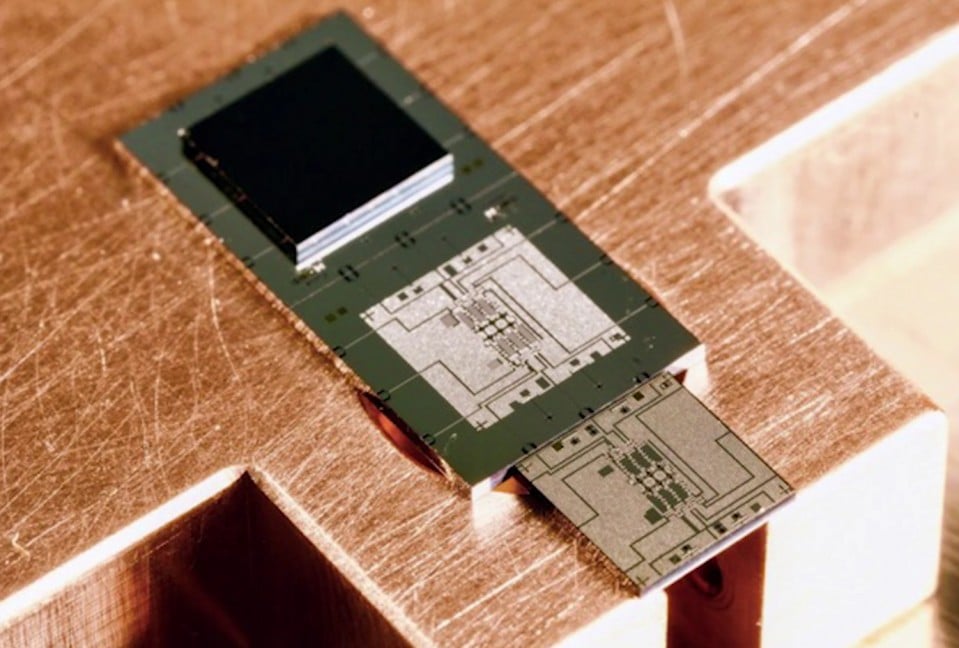

Computing / Quantum Computing
Google’s New Chip Is a Stepping Stone to Quantum Computing Supremacy
The search giant plans to reach a milestone in computing history before the year is out.

John Martinis has given himself just a few months to reach a milestone in the history of computing.
He’s leader of the Google research group working on building astonishingly powerful computer chips that manipulate data using the quirks of quantum physics. By the end of this year, Martinis says, his team will build a device that achieves “quantum supremacy,” meaning it can perform a particular calculation that’s beyond the reach of any conventional computer. Proof will come from a kind of drag race between Google’s chip and one of the world’s largest supercomputers.
“We think we’re ready to do this experiment. It’s something we can do now,” says Martinis.
One reason for his confidence is that Google’s roughly 25-strong group has made a new quantum chip that tests out key design features needed to make a device for that head-to-head contest.
Quantum chips represent digital bits of data using qubits, devices that can shortcut through some tough calculations by exploiting the counterintuitive physics of quantum mechanics. Researchers have so far demonstrated quantum computing with only small groups of qubits, though. Google has released results from a chip that has nine qubits arranged in a line, but Martinis says he’ll need a grid of 49 qubits for his quantum supremacy experiment.
Google’s latest chip has only six qubits, but they are arranged in a two-by-three configuration that Martinis says shows the company’s technology still works when qubits are nestled side by side, as they will be in larger devices.
The six-qubit chip is also a test of a manufacturing method in which the qubits and the conventional wiring that controls them are made on separate chips later “bump bonded” together. That approach, a major focus of Google’s team since it was established just over two years ago, is intended to eliminate the extra control lines needed in a larger chip, which can interfere with how qubits function.
“That process is all working,” says Martinis. “Now we’re ready to kind of move fast.” Designs for devices with 30 to 50 qubits are already in progress, he says. He briefly flashed up images of the six-qubit chip at the recent IEEE TechIgnite conference in Burlingame, California, but his group has yet to formally disclose technical details.
Martinis joined Google in late 2014 from the University of California, Santa Barbara, where he remains a professor today (see “Google Launches Effort to Build Its Own Quantum Computer”). His team is one of several industrial research groups recently formed or expanded thanks to growing signs that the technology behind quantum computing is becoming more tractable. The race to develop quantum processors includes Intel, Microsoft, IBM, and even startups (see “10 Breakthrough Technologies 2017: Practical Quantum Computers”).
Simon Gustavsson, a principal investigator in a quantum computing research group at MIT, says that Google is one of the leaders. “It’s pretty comparable between Google and IBM,” he says.
Pulling off its quantum supremacy experiment this year would underline the search company’s competitiveness, although quantum processors would need to be much larger than 50 qubits to be capable of useful work.
“It’ll be an academic milestone,” says Chris Monroe, a professor at the University of Maryland and cofounder of the quantum computing startup IonQ. “Afterward you still have to figure out how to make it more scalable and programmable.”
Martinis agrees that much will remain to be done, but he argues that the experiment could become a benchmark for anyone claiming to have a working quantum computer.
He also says the target has helped managers at Google, and the company’s cofounder Sergey Brin, appreciate that the technology is becoming real. “They all get it and are very excited about it,” says Martinis. “We’re trying to get support within Google, and this experiment has been very good to get other engineers talking to us.”